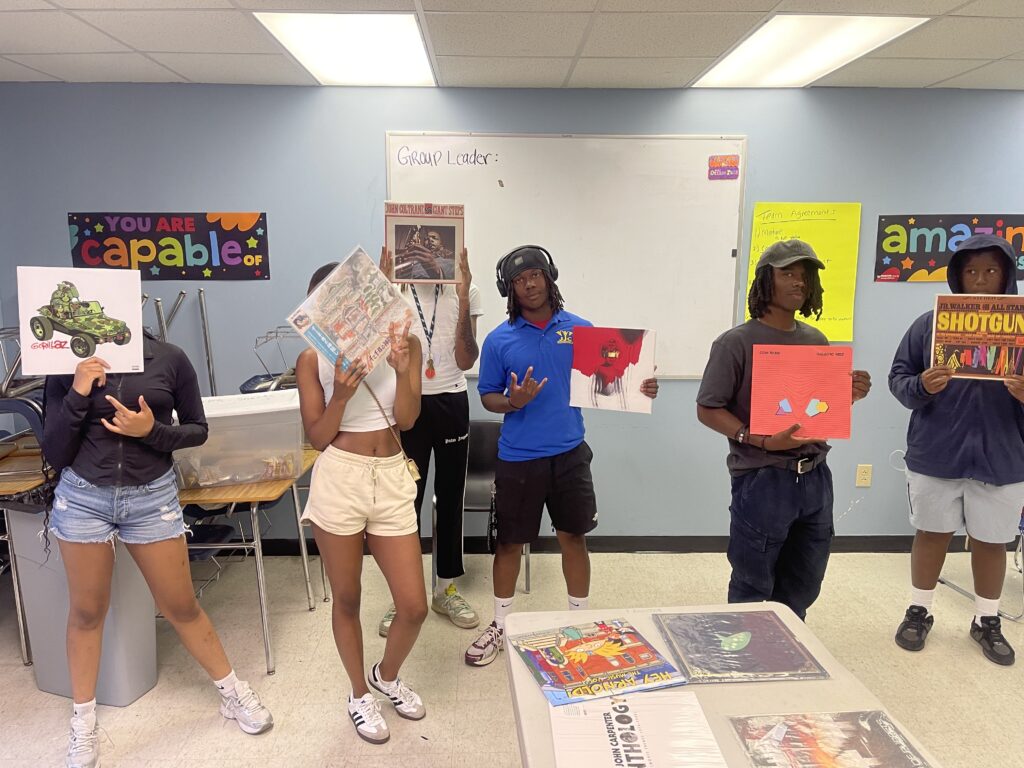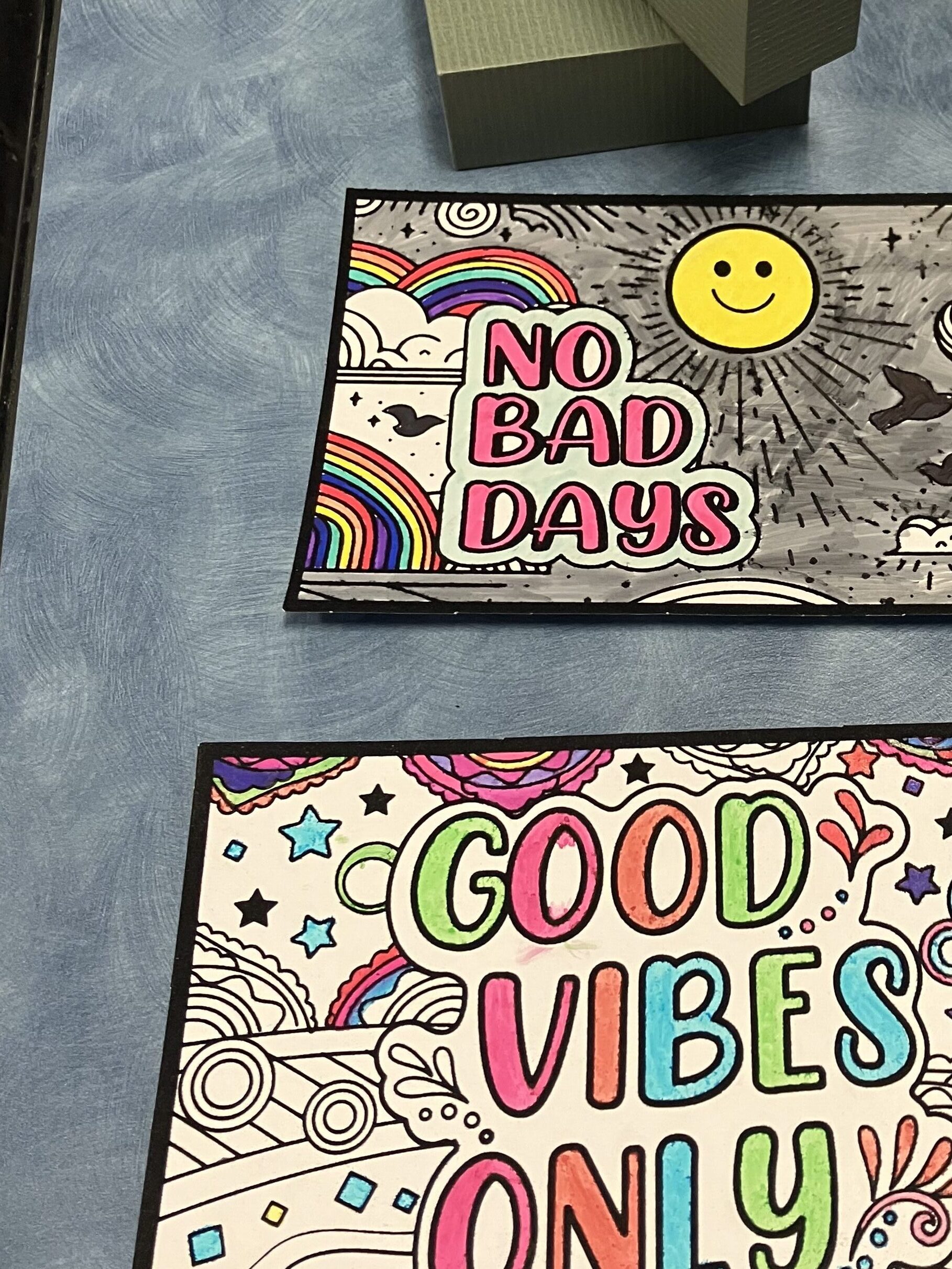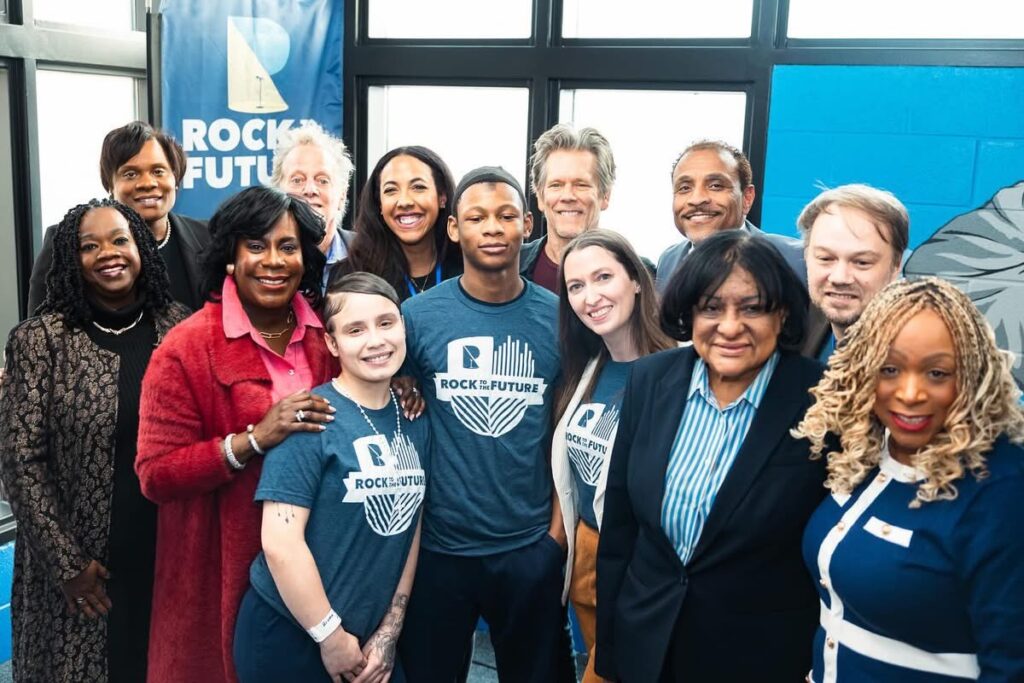As Rock to the Future’s Youth Engagement Specialist, my work centers on creating spaces where young people feel safe, supported, and empowered to thrive—whether through social-emotional learning, connecting students and families to vital resources, or advocating for justice-involved youth in courtrooms and community spaces. Over the past year, I’ve seen powerful transformations: a student discovering their voice, a family feeling truly heard, and a young person getting a second chance through diversion support.
We show up for our youth, our families, and our community.

This year, we launched our pilot diversion program in partnership with the District Attorney’s Office—an opportunity to harness the power of music and mentorship to help youth rewrite their stories and work toward expunging their records. In my role, I walked alongside students every step of the way: attending court hearings, coordinating with probation officers, connecting with families, and ensuring access to resources ranging from mental health support to school advocacy. Whether in a courtroom, at a town hall meeting, or in our music spaces, the goal remains the same—to affirm worth, amplify voice, and remind our youth they are never alone.
I think back to one summer afternoon, setting up my table with colorful supplies, vibrant signs, and positive affirmations, when a new student looked at me and said, “Wow, I love that you live out loud.” They told me they had felt unsure at first—unsure how to engage, whether they could truly be themselves, and if “being too much” might push others away. Yet by showing up, they found something unexpected: acceptance. They realized that bringing their full self into the room wasn’t just okay—it was welcomed. That’s what we work to cultivate every day at Rock to the Future: belonging.

We also took a meaningful step toward bridging cultural gaps in our community. I can still hear the cheers from the audience as we delivered our first-ever showcase speech en español—a moment meant to honor and include more of the youth and families we serve. The joy in the room was unmistakable. People felt seen, heard, and celebrated. This wasn’t just symbolic—it reflected our ongoing commitment to equity, inclusion, and belonging. We now offer our surveys in both English and Spanish, and we continue to grow by listening to our communities and finding new ways to meet their needs.
Alongside improving survey accessibility, we deepened our expertise in surveying practices to better connect with students’ families. With generous support from the William Penn Foundation, we completed the Listen4Good survey training, which helped us develop our Parent/Guardian feedback survey. We invited parents and grandparents into the space for honest, sometimes difficult conversations. Using a restorative approach, we encouraged family members to support their youth through challenges—focusing on learning from experiences rather than judging them. Many of these talks ended with hugs and healing, reminding me of the impact of showing up authentically and making space for others to do the same.
One unforgettable highlight was being behind the scenes for our ribbon-cutting ceremony and the reveal of Ruth’s Room—the music studio inside Juvenile Justice Services Center. Working in this setting, with youth in circumstances outside their control, was both humbling and uplifting. We prepared together, slowing down the pace so they felt ready to meet media, community leaders, and even celebrities. Watching their smiles as they took photos, stepped on stage, and shared their music was pure joy. It was a reminder that no matter where we meet or who we meet, the beauty of music—and of embracing humanity—can bring us together, uplift us, and remind us of our shared potential.

Another major milestone was launching our Instructor Training Program. Watching alumni step into leadership roles and pursue their own educational paths has been inspiring. Some of the very students from my first RTTF class are now leading the way—proof that even when it seemed no one was listening, they were quietly absorbing, growing, and preparing to shine.Throughout the year, I’ve had the privilege of watching students across our various locations find their voices. From the student who once said, “I can’t be on that stage” but later asked for “a full band behind me,” to the youth who went from avoiding public sharing to being the first to raise their hand in our share circle—these moments are the real magic of Rock to the Future. They are youth stepping up, dreaming bigger, and taking up space they once thought wasn’t theirs to claim.
